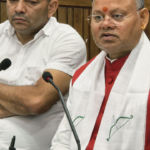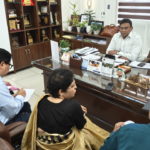After an incredible nine months in orbit, astronauts Sunita Williams and Butch Wilmore have safely returned to Earth. Their journey, part of an important mission aboard the International Space Station (ISS), has provided essential insights into space exploration and the challenges of long-duration space travel.
During their extended stay aboard the ISS, Williams and Wilmore were involved in a wide variety of scientific experiments, focusing on everything from human health in space to testing new technologies for future missions. Their work contributes to ongoing efforts to better understand how extended periods in space affect the human body and what it takes to support astronauts on missions to the Moon, Mars, and beyond.
Williams, an experienced astronaut and the first woman to command the ISS, is known for her leadership and expertise in space exploration. Her previous missions, including record-setting spacewalks, have made her a role model for aspiring scientists and engineers around the world. Wilmore, another seasoned astronaut, played a key role in maintaining the station and ensuring the success of numerous operations throughout the mission.
The astronauts’ return was carefully planned, with recovery teams on standby to greet them after their capsule re-entered Earth’s atmosphere and landed safely. Upon landing, both astronauts will undergo medical evaluations to monitor the effects of their prolonged stay in space and to assess their readiness for life back on Earth.
This mission is an important milestone in NASA’s ongoing research into space travel, and the knowledge gained from it will help guide future missions. With plans for human exploration of the Moon and Mars on the horizon, the experience and data from Williams and Wilmore’s mission are vital for preparing astronauts for the challenges of deep space. Their successful return marks another step forward in humanity’s journey to the stars.








